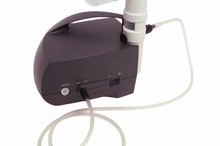What does fact checked mean?
At Healthfully, we strive to deliver objective content that is accurate and up-to-date. Our team periodically reviews articles in order to ensure content quality. The sources cited below consist of evidence from peer-reviewed journals, prominent medical organizations, academic associations, and government data.
- British Journal of General Practice: Steam Inhalation Therapy: Severe Scalds as an Adverse Side Effect
- British Journal of General Practice: Steam Inhalation Therapy: Severe Scalds as an Adverse Side Effect
- JAMA: Effect of Inhaling Heated Vapor on Symptoms of the Common Cold.
- JAMA: Effect of Inhaling Heated Vapor on Symptoms of the Common Cold.
The information contained on this site is for informational purposes only, and should not be used as a substitute for the advice of a professional health care provider. Please check with the appropriate physician regarding health questions and concerns. Although we strive to deliver accurate and up-to-date information, no guarantee to that effect is made.
Steaming for Sinus Congestion
Unfortunately, there is no cure for the common cold. There are, however, treatments that can minimize the symptoms of this all-too-common ailment. One common home remedy for reducing airway congestion is inhaling steam. A July 2012 study published in the "British Journal of General Practice" noted this practice is widely recommended in brochures on congestion remedies distributed by doctors in the United States, the Netherlands and the United Kingdom. While it would seem that this often recommended treatment must be both effective and based in science, evidence of its effectiveness is still largely mixed.
If you are experiencing serious medical symptoms, seek emergency treatment immediately.
No Reduction in Nasal Resistance
The general idea behind steam therapy is that steam will loosen nasal mucus and promote drainage, leading to easier breathing. A study conducted by the Cleveland Clinic and published in "JAMA" in April 1994 seemed to dispute this belief. In this study, 68 clinic employees who reported common cold symptoms were divided into 2 groups at random. One group was given a 1-hour steam therapy treatment, while the other received a 1-hour treatment with room temperature air. In comparing the nasal resistance -- the difficulty of moving air through the nasal passages -- researchers found no significant difference between the study groups. These findings suggest that steam therapy may not be as beneficial for nasal congestion as was once believed.
- The general idea behind steam therapy is that steam will loosen nasal mucus and promote drainage, leading to easier breathing.
- In comparing the nasal resistance -- the difficulty of moving air through the nasal passages -- researchers found no significant difference between the study groups.
Burn Risk
Is N-Acetyl Cysteine Good for Colds?
Learn More
Steam therapy can sometimes be dangerous. A July 2012 study published in the "British Journal of General Practice" reported that steam therapy poses a risk for burns 1. In exploring the cause of injury in Dutch burn centers, the study found that an average of 3 people were admitted annually as a result of injuries experienced while performing steam therapy treatments. Most of those admitted to the hospital for treatment were children. The emotional toll of these severe burns, several of which required skin grafting, could not be measured. But the direct healthcare cost of treatment of these burns was approximately $127,000.
- Steam therapy can sometimes be dangerous.
- In exploring the cause of injury in Dutch burn centers, the study found that an average of 3 people were admitted annually as a result of injuries experienced while performing steam therapy treatments.
Further Evidence of Lack of Benefit
An October 2013 study published in the "British Medical Journal" compared effectiveness of symptom relief from respiratory infections based on the healthcare providers' advice to use various treatments. Participants were randomly divided into 3 groups: One took acetaminophen (Tylenol), the second used ibuprofen (Advil, Motrin) and the third alternated by using both. Each group was further split based on whether the healthcare provider advised using fever-reducers regularly or only as needed, and whether steam therapy was recommended or not. Results indicated advice to use steam did not provide symptom relief. Additionally, the researchers reported a slight but noteworthy risk of mild scalding in those who were advised to use steam.
- An October 2013 study published in the "British Medical Journal" compared effectiveness of symptom relief from respiratory infections based on the healthcare providers' advice to use various treatments.
- Each group was further split based on whether the healthcare provider advised using fever-reducers regularly or only as needed, and whether steam therapy was recommended or not.
Conflicting Results
Relief From Ear Congestion
Learn More
While a number of studies indicate the use of steam therapy is largely ineffective and potentially dangerous, a few studies suggest there could be some benefit. In an analysis of 6 studies centered around the effectiveness of steam therapy as a cold treatment, a March 2013 report published by the "Cochrane Database of Systematic Reviews" found that the field was equally split 4. Three of the 6 studies showed no benefit to steam therapy as a treatment for the common cold, while the other 3 showed benefits. No study showed that the use of steam therapy worsened symptoms, confirming the belief that this remedy is generally safe when practiced properly. However, the authors recommend further research to determine whether steam therapy is useful for relief of symptoms from sinus congestion.
- While a number of studies indicate the use of steam therapy is largely ineffective and potentially dangerous, a few studies suggest there could be some benefit.
- However, the authors recommend further research to determine whether steam therapy is useful for relief of symptoms from sinus congestion.
Warnings and Precautions
While sinus and nasal congestion is most commonly caused by the common cold and goes away in 7 to 10 days, these symptoms sometimes indicate something more serious. If you experience congestion lasting more than 10 days, develop a fever, or experience a headache or facial pain that worsens when you bend forward, contact your doctor. It could be sinusitis, which might require additional treatment. Seek emergency medical attention if you experience any difficulty breathing.
- While sinus and nasal congestion is most commonly caused by the common cold and goes away in 7 to 10 days, these symptoms sometimes indicate something more serious.
- If you experience congestion lasting more than 10 days, develop a fever, or experience a headache or facial pain that worsens when you bend forward, contact your doctor.
Related Articles
References
- British Journal of General Practice: Steam Inhalation Therapy: Severe Scalds as an Adverse Side Effect
- JAMA: Effect of Inhaling Heated Vapor on Symptoms of the Common Cold.
- British Medical Journal: Ibuprofen, Paracetamol, and Steam for Patients With Respiratory Tract Infections in Primary Care: Pragmatic Randomised Factorial Trial
- Cochrane Database of Systematic Reviews: Heated, Humidified Air for the Common Cold
- Family Practice Notebook: Acute Sinusitis Management
Resources
Writer Bio
Melanie Greenwood has been a freelance writer since 2010. Her work has appeared in "The Denver Post" as well as various online publications. She resides in northern Colorado and she works helping to care for elderly and at-risk individuals. Greenwood holds a Bachelor of Arts in pastoral leadership from Bethany University in California.









